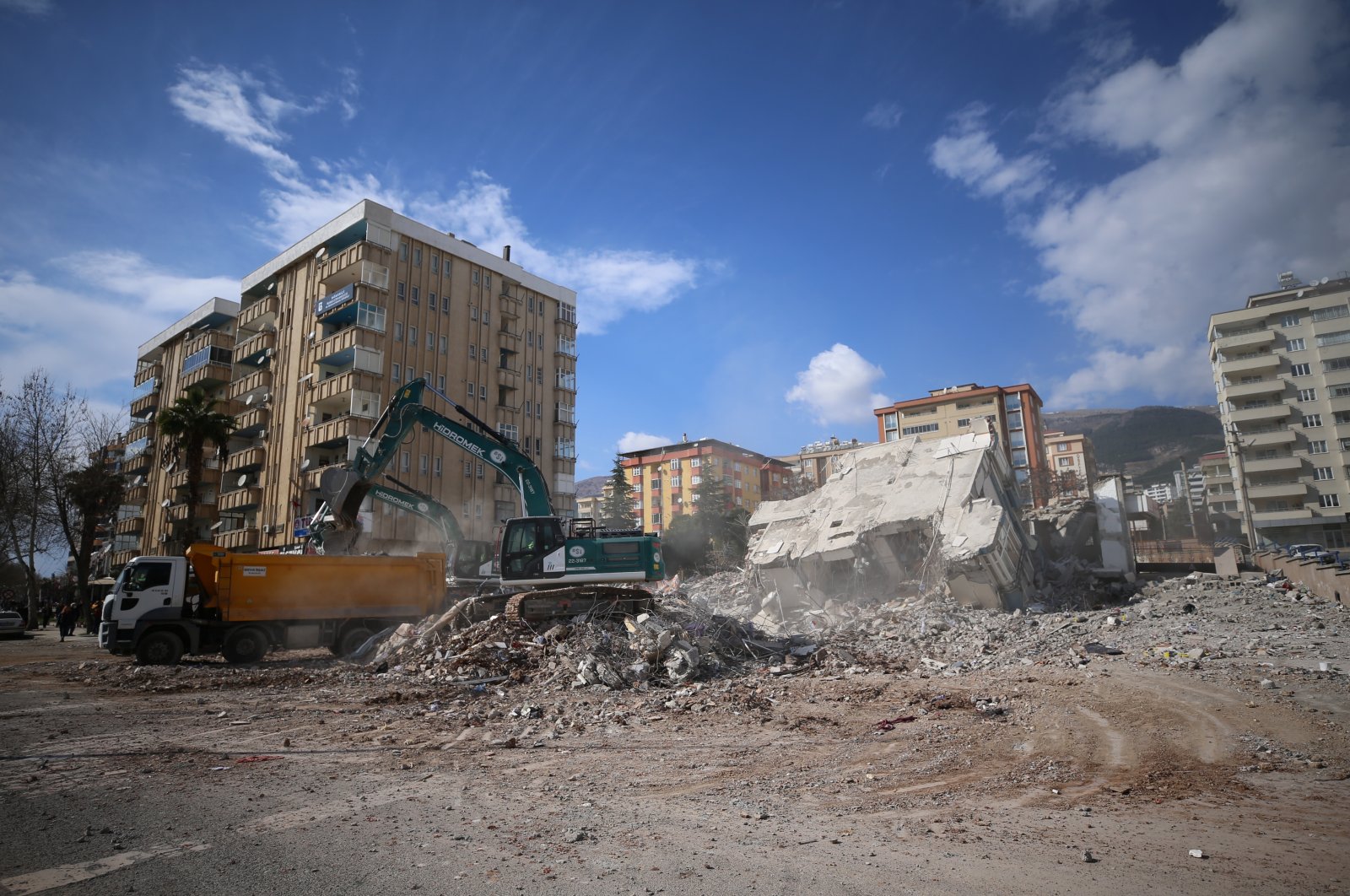
Operations, including controlled demolition of buildings and debris removal, continue in the provinces of Kahramanmaraş and Hatay, with simultaneous operations carried out in several neighborhoods on Friday.
After powerful back-to-back earthquakes that jolted vast swathes of the southeastern region of the country, infrastructural damage caused thousands of tons of debris that is now being removed in a controlled manner and disposed of in 47 designated spots in the region, according to the latest official reports.
Demolition efforts
Controlled demolition and debris removal works are being carried out by the teams in the Dulkadiroğlu and Onikişubat districts of Kahramanmaraş on buildings determined as heavily damaged by the Ministry of Environment, Urbanization and Climate Change after the earthquakes.
An emergency demolition decision was declared for some 11 buildings in Dulkadiroğlu and Onikişubat, which were set to be demolished on Friday, Anadolu Agency (AA) reported.
In Hatay, particularly in its second-largest district Antakya – where the Kahramanmaraş-centered earthquakes caused great destruction – works undertaken by State Hydraulic Works (DSI) teams in five specific regions are underway.
According to reports in the field, the DSI teams have so far moved the debris of 300 buildings to the rubble dump site, while the removal of the wreckage of another 580 buildings is expected to be carried out by the same teams soon.
Ahmet Ersin Gökçe, the sixth regional director of the DSI, told Anadolu Agency (AA) that construction equipment and the organization's equipment were sent to the region right after the earthquake.
Gökçe explained that the city where the most destruction was seen was Hatay and noted that during the peak time of their operations, the DSI teams had intervened with 331 trucks and 274 excavators. "We carried out these operations with over 1,000 personnel. It has been a month since the earthquake, and debris removal work continues. We carried 900,000 tons of rubble so far.''
Adding that through common efforts of the personnel and other public institutions, Gökçe said that the work continues with 774 machines and parts of equipment in the field, with a focus on severely damaged buildings. Apart from debris removal activities, their teams are also engaged in the extraction of the potable water needed by tent cities. The DSI regional director noted that for this purpose the works with drilling machines are being carried out at three different points in Antakya.
DSI teams also provide infrastructural support and prepare meals for other teams and personnel in the area. "With the meals we prepare in our soup kitchens, we provide catering services not only to our own personnel but also to our military, police and all public employees,'' Gökçe said. He also praised the cooperation of other government institutions in the field during the challenging period after the earthquake.
Debris disposal
According to the latest official data, more than 230,000 buildings were severely damaged and in need of demolition, while the wreckage is being removed by taking measures in a way that will not harm the environment and groundwater within the framework of the relevant legislation.
After the excavation and disposal at several designated dump sites, uninterrupted irrigation is done with sprinklers in the demolition and disposal areas. Asbestos measurements are carried out on the samples taken from the debris in mobile environmental laboratories allocated in the field by the Environment, Urbanization and Climate Change Ministry.
Within this framework, debris dumping sites were created at 47 different points in 11 provinces by the ministry. The collected excavation is processed in a way that does not endanger the surroundings with large stones being crushed, reduced and made available for recycling by means of crushers placed in all fields.
According to information received by AA from the ministry, it is planned that the recycled materials from the excavations will be used in the repair of damaged roads in earthquake zones, and the remaining waste such as concrete and bricks to be used in the construction of pavements and walkways.
The demolition works, at the same time continue in other provinces affected by the Feb. 6 earthquakes, including Adıyaman, where the interiors of houses in heavily damaged buildings show the extent of the destruction.
At least 46,104 people lost their lives after the magnitude 7.7 and 7.6 earthquakes struck, while more than 13,000 aftershocks occurred in the region since Feb. 6.
The damage caused by the earthquakes, however, is estimated to be over $100 billion (TL 1.90 trillion), a representative from a UNDP program of the United Nations said Tuesday.
